The Dark Matter Particle Detection Satellite is the first starting star of the special space science of the Chinese Academy of Sciences. Dozens of research units have participated in the work, and the work units associated with the detectors are listed here.
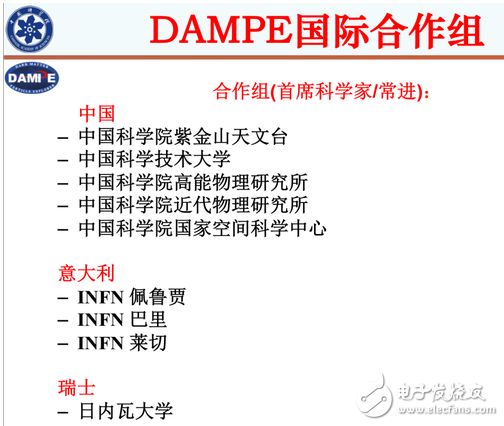
More than 200 scientists and engineers participated in the research phase of the project. Currently, more than 80 scientists are involved in data analysis.
Why look for dark matter?A large number of observations on the ground and space now show that the most important part of our universe is dark matter and dark energy, and humans only know five percent of the universe.
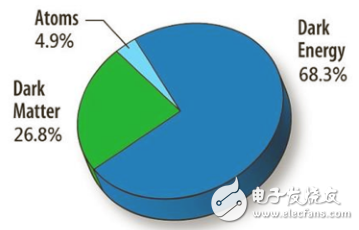
The components of today's universe
According to astronomical observations, dark matter has no strong interaction and no electromagnetic interaction, which means that it neither illuminates nor reflects light, nor absorbs light. You can't find it by optical principle. The interaction is very weak. The dark matter is five times as long as the visible matter. It has a long life and a large mass. The physical properties of the dark matter are matched with all the basic particles in the standard model. It is found that none of the elementary particles can conform to the physical properties of the dark matter.
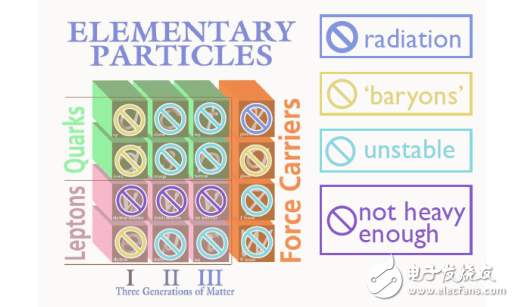
The fact that all elementary particles in the standard model do not match the properties of dark matter particles means that if dark matter particles are found, they will definitely exceed the standard model, causing great changes in physics, which is the main reason why dark matter detection is so significant.
How to find dark matter?Internationally, it has cost tens of billions of dollars in dark matter detection. Detection methods include detecting dark matter particles on the accelerator, directly detecting dark matter particles in the ground, and indirectly detecting dark matter particles in the sky.
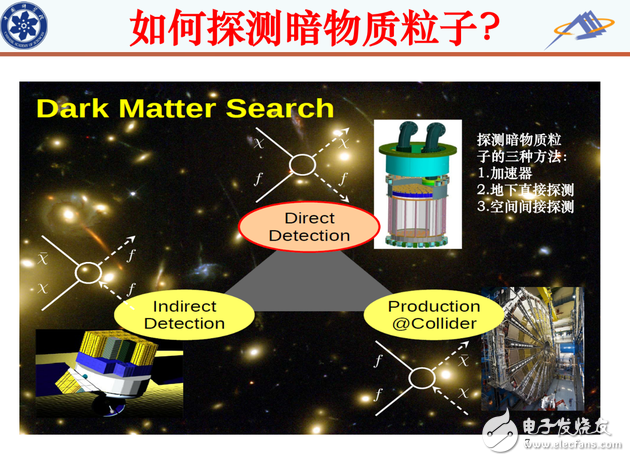
Three methods for detecting dark matter particles
Our dark matter particle detection satellite belongs to the space indirect detection of dark matter particles, mainly to the space to detect the physical properties of dark matter, to clarify its physical nature.
Dark matter itself is invisible, but when dark matter is annihilated or decays, visible particles are produced. By detecting satellites to detect visible particles, it is possible to detect invisible dark matter particles, called indirect detection.
Since the signal generated by dark matter particles quenching or decaying is very weak, we need a high-energy resolution, high spatial resolution, high-statistic, low-background high-energy particle telescope, which means “seeing clearly and accurately.†.
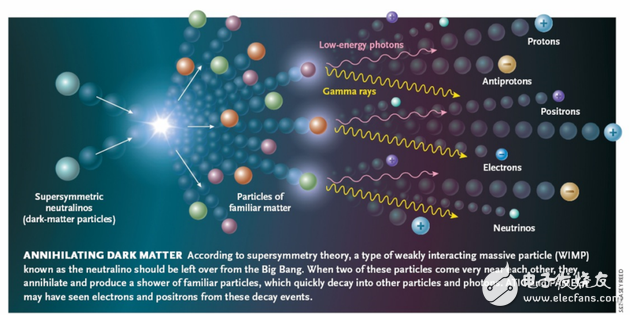
Our team has been in the dark matter detection for 20 years: in 1998, we began to propose scientific goals, and in 1999 we began to validate our experimental methods on the accelerator. In 2000, it took 10 years to solve all the key technologies, 2011. It took four years to develop a satellite that has been working in the sky for two years.
Developed a "full" satelliteOur satellite was launched in December 2011 and launched at the end of 2015. Throughout the development phase, we spent a total of four years and experienced three stages and developed four prototypes.

At the program stage, it is necessary to demonstrate whether the detector scheme is feasible, including whether satellite integration is feasible. The electrical components that are made, that is, the small dark matter particle detectors, prove to work properly on the ground, and then go to Europe to calibrate to prove that your method is feasible before entering the initial stage.
In the initial stage, a set of verification machines was developed, which is as large as the real detectors. The verification detectors can work normally and meet the requirements. Then we developed a set of flying pieces to observe in the sky.
The final stage is to do the real heavenly detector.
On December 17, 2015, at the Jiuquan Satellite Launch Center, the "Wukong" satellite was successfully launched. The name of the satellite is "Wukong", and many people wonder how this came. This is the name of the satellite that was sent online on the Internet. We all think that this is a very good name. I hope that through the "eyes" of the "Wuking", we can find the "demon and ghost" of dark matter. The English name of the satellite is Dark Matter ParTIcle Explorer, or DAMPE for short.

Three months after the satellite was launched, the Academy of Sciences organized a review, all indicators met the assessment requirements, and the whole star index was rated at 100 points. In March 2016, the satellite was delivered to the Purple Mountain Observatory of the Chinese Academy of Sciences and officially entered the scientific operation stage.
So far, the satellite has been in orbit for nearly two years, and all the detectors have the same performance as the one just launched, maintaining a state of 100 points.
What are the goals of the Wukong satellite?Dark matter particle detection satellites achieve three scientific goals mainly by detecting high-energy particles in space. The first and most important scientific goal is to detect dark matter particles. The Wukong satellite itself is a cosmic ray and a gamma ray telescope, so we can also do research on the origin and propagation acceleration of cosmic rays, which is also an important scientific issue in astronomy. .
In terms of dark matter, dark matter satellites are looking for three typical signals. One is the gamma ray line, the second is the gamma ray with a halo distribution, and the third is the singular electron spectroscopy structure. These three are characteristic signals of dark matter, which are significantly different from other astrophysical structures. Finding these three signals is especially important for studying dark matter.
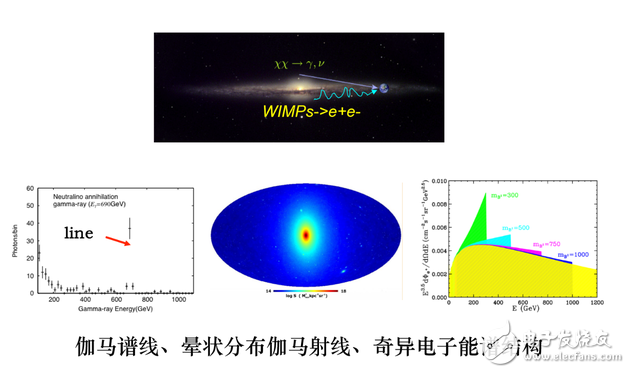
Gamma line, halo-like gamma ray, singular electron spectrum structure Dark matter satellite is a telescope that measures all the high-energy particles in the sky and measures three main physical quantities: energy, direction, charge, and time provided by the satellite. .
The most important thing is to divide the high-energy particles in the sky very clearly, so we use the words "see clearly, accurate" to express the design indicators of dark matter particles.
It can be seen that all things are clearly divided; the measurement is accurate, all physical quantities are measured with high resolution, so the key physical quantities are designed in two independent measurements, each physical quantity is used in two Detector measurement, which ensures high reliability of results.
What is the detection principle of the "Wukong" satellite?The Dark Matter Satellite is a high-energy particle and gamma-ray telescope. There are four types of detectors from top to bottom. The top is a plastic scintillator detector, followed by a silicon array detector, a BGO energy detector, and a neutron detector.
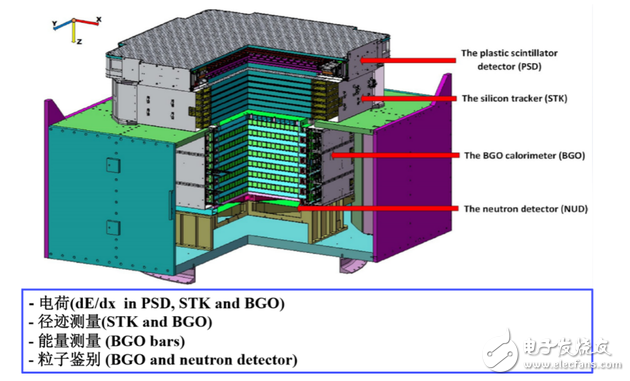
Each detector has a different function, and the four detectors are combined to achieve high-resolution observation of high-energy electrons, gamma rays, and cosmic ray particles.
The dark matter particle detection satellite has a total of 75,516 road detectors. It can be said that this is the most complicated satellite in our country's flight in the sky or in heaven.
The plastic scintillator detector was developed by the Institute of Modern Physics of the Chinese Academy of Sciences. Its main function is to measure the incident particle charge. We know that there are many kinds of particles in the sky, such as gamma rays are not charged, the charge is 0; electrons are negatively charged -1; positrons are +1; protons are +1; hydroquinone lithium borax, up to iron, iron is +26 Most of the particles can be identified by measuring the charge.
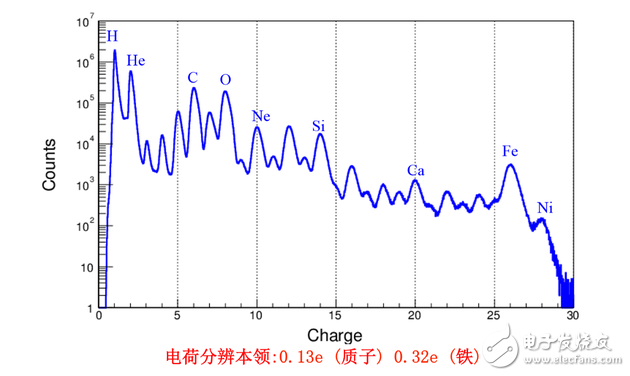
The level of detection of a particle detector can be described by a physical quantity such as the charge resolution level. The charge resolution level is now 0.13 for protons and 0.32 for iron, so that all elements on Earth have high-energy particles in the sky. This 0.13 charge resolution level is comparable to the highest level of all orbiting satellites in the world, and we have reached the highest level in the world.
Below the plastic scintillator detector is a silicon array detector. Its research unit is an international cooperation team led by the Institute of High Energy Physics of the Chinese Academy of Sciences, including the University of Geneva in Switzerland and the University of Perugia in Italy. Its main function is to measure The direction and charge of the particles.
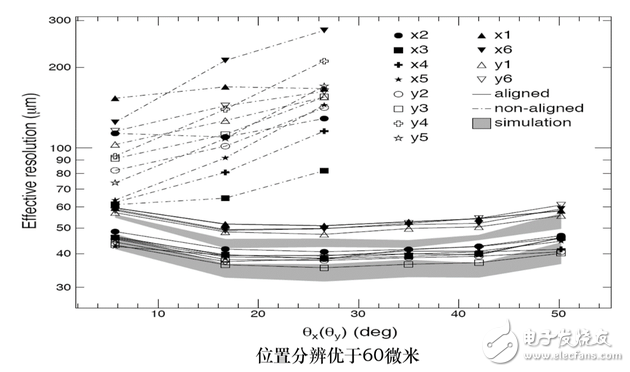
The level of this detector can be represented by positional resolution. The resolution of the detector position is better than 60 microns. The gray shadow in the above figure is the highest level of computational simulation, which is in good agreement with the theoretical results. This shows that our The detector has reached the level of the most advanced gamma ray telescope in the world.
Below the silicon array detector is a detector called the BGO energy meter. The entire detector is 1.4 tons in weight, and only the BGO energy meter is more than one ton. Its main task is to measure the energy and direction of incident particles and to identify the type of particles, which was jointly developed by the University of Science and Technology of China and the Zijinshan Observatory.
The BGO detector has one of the longest crystals in the world, 60 cm long.
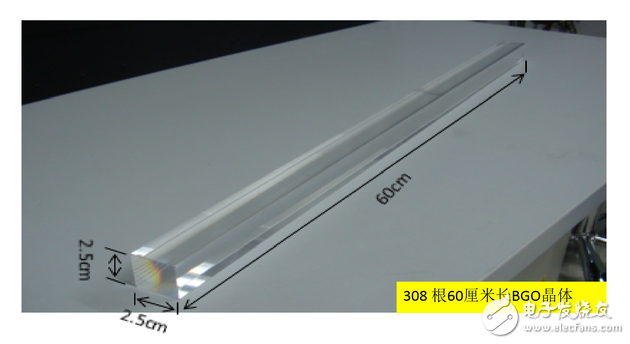
Before the satellite project, we worked with the silicates and spent several years developing the crystals with high efficiency and low cost. This is the longest BGO scintillation crystal currently flying in the sky.
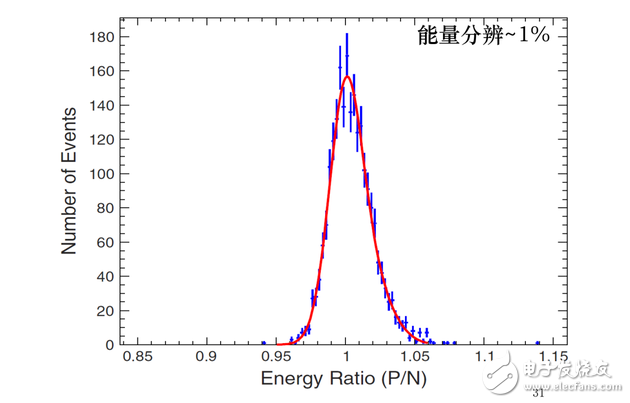
So what is the level of the BGO calorimeter? In measuring the energy of incident particles, the energy resolution reaches one percent, which is the highest level in the world, far exceeding other satellite detectors flying in the sky.
The neutron detector was developed by the Purple Mountain Observatory of the Chinese Academy of Sciences. Its main function is to identify particles. We know that the protons and heavy nuclei of cosmic rays and detectors produce a large number of secondary neutrons, while electrons and gamma rays produce fewer secondary neutrons, according to which we can identify particles.
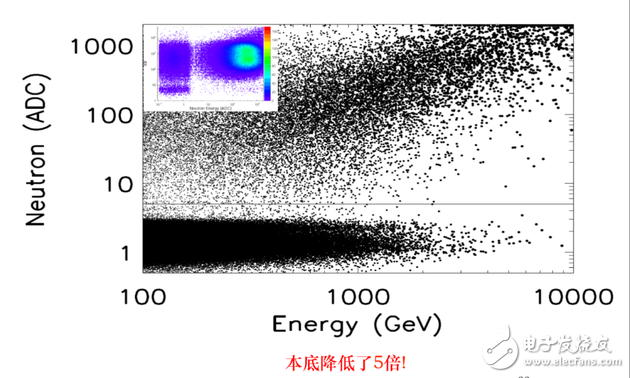
In the above picture, the lower left corner of the color map is an electronic gamma candidate case, and the top is the background. We can see that at the TeV level, it can be identified very well using only neutron detectors. This is the first time in the world to use neutron detectors to identify particles above TeV. We found this to be a very successful method.
Since there is no high-energy particle accelerator in China, after the development of our detector, it will be transported to the European Nuclear Research Center in Switzerland, using high-energy particles generated by the accelerator to simulate all the high-energy particles in the sky to verify the performance and calibration of our detectors. Device. It took us a total of six months to test the performance of the detector from protons, electrons to gamma rays, heavy nuclei, etc. The tests showed that all the indicators met the subsequent scientific needs.
After the completion of the detector, in order to ensure that the 75916 path detectors are working properly when the satellite is delivered, we have conducted long-term tests through the cosmic ray particles on the ground to prove that all detectors, software, and functions meet the requirements. In-orbit delivery.
How is the "Wolf" satellite's on-orbit operation?
The "Wukong" satellite was launched at the end of 2015. The weight of the satellite is 1,850 kilograms and the weight of the detector is 1,415 kilograms. Thanks to the engineers and leaders of the Institute of Microsatellite Innovation of the Chinese Academy of Sciences, this high load-to-weight ratio detector was developed.
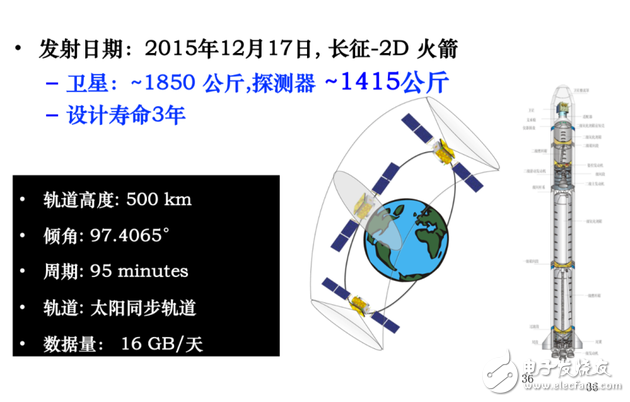
The design life of the satellite is three years, but according to the current test results, all the detectors work perfectly, and we expect the satellite to actually serve in the sky for much longer than its design life.
The satellite orbits the Earth 15 times a day, averaging 60 high-energy particles per second and 5 million high-energy particles per day. Nearly two years after launch, the satellite is very stable, like plastic scintillator detectors, BGO energy meters, neutron detectors, and its stability is better than 0.5%, basically no change with time.
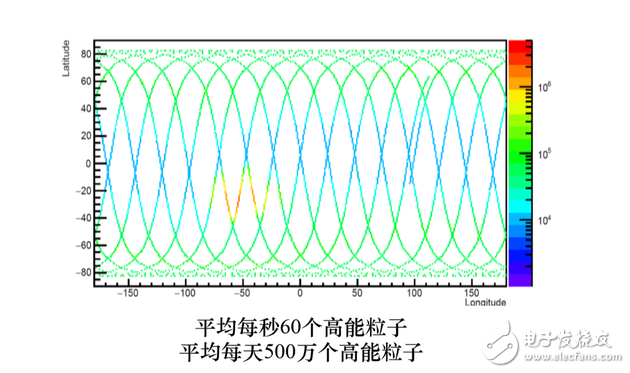
How difficult is it to develop the Wukong satellite in the sky observation situation?
In the process of developing satellites, the biggest challenge is particle identification.This satellite is different from other satellites in the world. We are observing all high-energy particles, and other satellite functions in the world are specialized. For example, gamma-ray telescopes only observe gamma rays, high-energy particle detectors. Only observed charged particles. But we have to observe all the particles, not only the gamma rays, but also the charged particles.
The particles in the sky are very complicated. The biggest situation is that the flow rate of each particle is completely different. In terms of protons, the main component of high-energy cosmic rays, its flow rate is 1000 times higher than that of electrons, which is 1 million times higher than that of gamma rays. Therefore, you must observe the gamma rays to reduce the proton background by at least 20 million. Times. For example, in a 20 million big city to find 20 people, can not make a mistake, this is a very difficult thing.
But our detectors are almost perfect due to some special design principles and engineers' engineering measures.
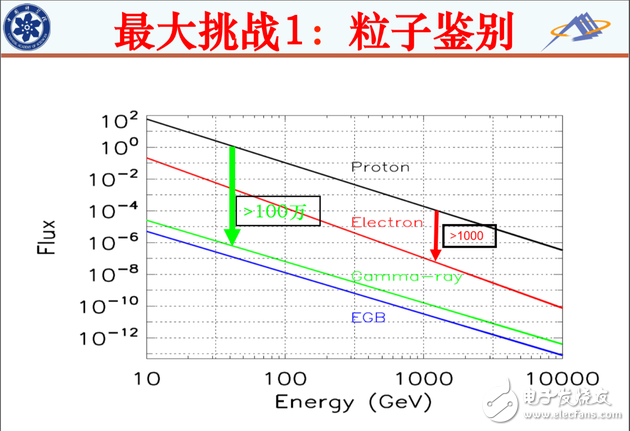
The above picture is raw data, and our electrons and protons are clearly distinguished. According to this picture, we can calculate that the background only accounts for 2.3% of the signal flow. This is the world's most efficient and lowest background detector. It allows us to measure and let us see clearly, because each The particles are well distributed and must be seen clearly.
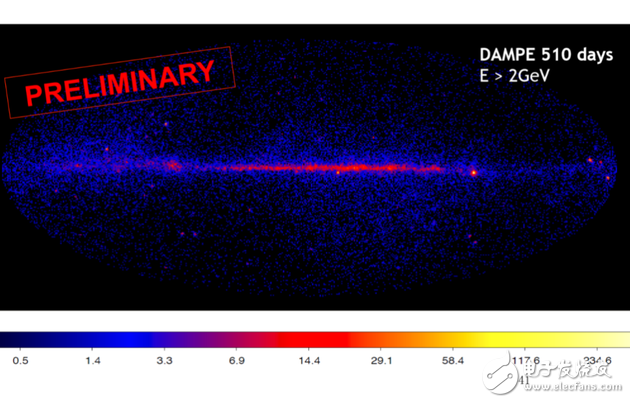
The picture above is the gamma ray we obtained. There are more than 100 celestial gamma ray sources on it. The large picture shows that the particle identification of our detector is perfect.
Why do you say that? As we mentioned earlier, the flow of gamma rays is only one millionth of the cosmic ray proton flow. To detect gamma rays, you must subtract the cosmic ray background. As long as one detector or small detector does not work, this cosmic ray charged particle will be inhaled from the bad small detector. The distribution of cosmic rays is isotropic and is everywhere. But the distribution of gamma rays is a disk of the Milky Way, you can clearly see the middle of a disk, which proves that our gamma detection is very accurate, the background is very low, indicating that our particle identification is very effective.
The second challenge is a dynamic range of 1 million times.The "Wom" satellite hopes to detect dark matter particles by observing GeV to high energy electrons and gamma rays above 10 TeV, requiring a single detector with a dynamic range of 1 million times.
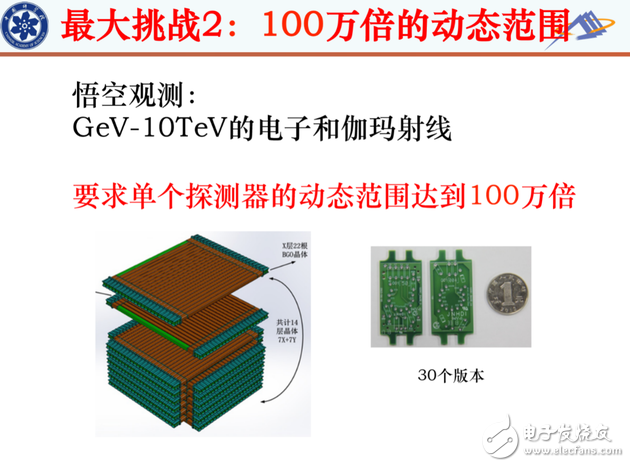
This is a physical concept. Simply put, if you look at the "eyes" of the "Wuk" satellite as a human eye, you have to see a 2 meter high basketball player and see the smallest cell in his body. Generally speaking, there are only 2 micron platelets. This is a very difficult thing.
We basically spent ten years to solve this problem. Finally, I got the support of several retired old professors from the University of Science and Technology of China and relevant domestic units to solve this problem.
In order for the board to meet the dynamic range of 1 million times, the two professors spent two years, got 30 different versions of the circuit, and finally chose the best circuit for the satellite. The circuit board read by the rear photomultiplier tube has a size of only one coin. Not only that, but the test results also need to meet the requirements, so we do a lot of experiments on the ground, do a lot of experiments on the accelerator, including calibration experiments in space, the results prove that the dynamic range and information is almost perfect, to meet the design requirements.
So, sum up: "Wokong" is the first time in the world to observe the band of TeV in space, which is equivalent to opening a new window of cosmic observation, because different bands reflect different physical components.
For example, if you look at the photos taken by ordinary cameras with your eyes, it looks like one; when you go to the hospital to take X-rays, you see another image; with a microwave, it is another image. Different images reflect different physical compositions, all of you, but reflect your different situations.
So, after opening a new observation window, we can see new physical phenomena. Moreover, opening the window is not only to see, but also to see clearly and accurately. Just mentioned, our satellite has the world's most efficient and lowest background detectors, which proves that we can see clearly; the indicators for achieving charge measurement, energy measurement and direction measurement can basically reach the international leading level. This shows that we are accurate.
Desktop Multi-function Adapter is suitable for any normal brands Laptop. Wall Multi-function Adapter is suitable for people who always travel any country. Its plug is US/UK/AU/EU etc. We can produce the item according to your specific requirement. The material of this product is PC+ABS. All condition of our product is 100% brand new.
Our products built with input/output overvoltage protection, input/output overcurrent protection, over temperature protection, over power protection and short circuit protection. You can send more details of this product, so that we can offer best service to you!
Multi-Function Adapter, 12W Wall Adapter, 30W Wall Adapter ,90W Desktop Adapter
Shenzhen Waweis Technology Co., Ltd. , https://www.waweispowerasdapter.com